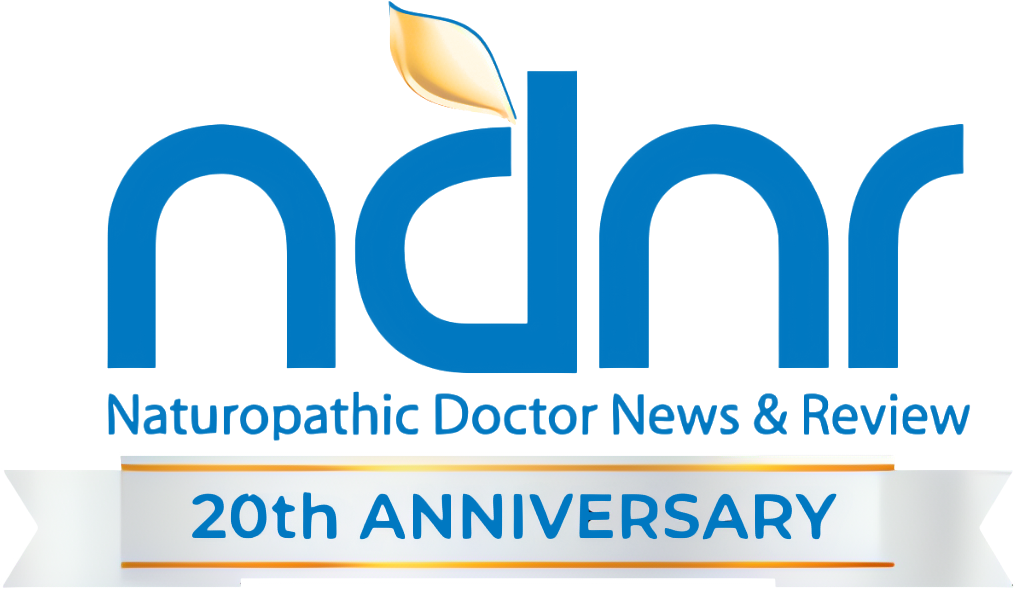Arlene B. Donar, ND
Interstitial cystitis (IC) is a chronic, debilitating, multifactorial syndrome characterized by excessive urgency and frequency of urination, suprapubic pain, dyspareunia and pelvic pain along with negative urine cultures. The course of the disease is usually marked by flare-ups and remissions. IC generally persists throughout the patient’s life. On clinical evaluation, patients presenting with IC should have no other definable pathology such as urinary infections, carcinoma or radiation-induced cystitis (Metts, 2001). This symptom complex has also been referred to as painful bladder syndrome, leaky bladder syndrome and irritative bladder syndrome (Marshall, 2003).
According to a 2001 Nurses’ Health Study, IC may affect as many as 700,000 women in the U.S., suggesting that the prevalence among women may be as high as 67 per 100,000. Women comprise up to 90% of patients with IC. Onset usually occurs between the ages of 30 and 70 years of age with a median age of 43 (Metts, 2001).
Most patients will consult at least five physicians, including psychiatrists, over a period of more than four years before IC is diagnosed (Metts, 2001).
Etiology
While the exact cause of IC is not known, it is most likely related to autoimmune and allergic etiologies. Numerous studies have demonstrated that symptoms originate from a defect in the glycosaminoglycan (GAG) component of the layer of mucin that covers and protects the bladder urothelium. This breakdown of the bladder protective layer leads to a hyperpermeable bladder wall, stimulation of pain receptors and inflammatory symptoms (Marshall, 2003).
Stress is also known to contribute to symptoms. Patients may report vasodilation, flushing and itching and general skin hypersensitivity in the genital area, upper thighs and abdomen. Corticotrophin-releasing hormone (CRH) secreted from non-CNS sites has proinflammatory actions that may be mediated via mast cell activation. Mast cells are also involved in autoimmunity (Sant et al., 2007). Mastocytosis has been reported in the bladders of 30%-65% of patients with IC. Further evidence of mast cell involvement comes from increased levels of histamine in bladder wall epithelium in IC patients (Marshall, 2003).
IC has the classic picture of autoimmune disease: symptom chronicity with exacerbations and remissions, organ-specific and non-organ-specific mononuclear cell infiltrates, the lack of a clearly defined pathogen and response to steroids or other immunosuppressants (Metts, 2001).
Autoimmune Connection
IC was first reported in 1915 when GL Hunner described two patients with “a rare type of bladder ulcer in women.” Researcher G.M. Fister, MD was among the first to demonstrate a link between autoimmune disease and IC in a patient with systemic lupus erythematosus (SLE). He suggested that patients with IC shared a clinical picture with autoimmune connective tissue disease (Fister, 1938). A 1983 study by Orth et al. confirmed Fister’s findings, and the term “lupus cystitis” was introduced (Orth et al., 1983). Histologically, no immune deposits of IgG, IgA, IgM or complement C1q were found in the mucosa and perivascular regions of urinary bladder specimens (Shibata et al., 2004).
Silk (1970) reported that he had found bladder-specific antibodies in IC patients. His findings indicated that IC belonged to the group of organ-specific autoimmune diseases (Silk, 1970). In a separate 1972 study by Jokinen et al., 31 of 33 (94%) patients with IC were found to have tissue autoantibodies against both non-organ-specific and organ-specific antigens.
On the basis of their findings, they stated that it seems probable that IC “belongs to the group of autoimmune diseases that lies between organ-specific and non-organ-specific systemic diseases. The disease is confined to one organ, but the tissue antibodies are non-organ-specific” (Jokinen et al., 1972).
A familial predisposition to IC was proposed after a report of IC in monozygotic female twins and a mother and daughter (Oravisto, 1980). A study by Christmas and Bottazzo demonstrated that IC is associated with HLA-DR6, and the allele seems to convey a relative risk factor of 4.91. There was evidence of HLA class I inappropriate hyperexpression in the urothelial cells; however, the most striking difference between the bladder tissue of IC patients and the normal control group was that the expression of HLA-DR molecules in the urothelium cells was positive for all three antibodies used in the study. In addition, large numbers of infiltrating cells expressing HLA class II CD3+T cells were evident within the submucosa. This class II expression along with class I hyperexpression in the urothelial cells allows them to activate CD4+ and CD8+ lymphocytes, which appear to be the main effector in the mechanism in destruction of the urothelial cells in IC (Christmas and Bottazzo, 1992).
Naturopathic Treatment
When considering an autoimmune etiology, an effective approach to treatment must address symptom relief, tissue repair and immune function.
- Nutrition Dietary modification is the cornerstone of IC therapy. Between 53%-63% of IC patients can identify foods that exacerbate symptoms or cause a flare-up. High acidic foods such as alcoholic beverages, carbonated drinks, caffeine, spicy foods, tomatoes, vinegar, chocolate and citrus fruits are among the worst offenders. Arylalkylamines (tryptophan, tyrosine, phenylalanine and tyramine) have also been implicated as triggers, particularly those found in bananas, beer, mayonnaise, nuts, onions, raisins and yogurt (Marshall, 2003). Acid or potassium is often the suspected mechanism (Hudson, 2001). Since the response to these foods is highly variable, an elimination/challenge is quite useful to identify individual triggers. Essential fatty acids in the form of fish oil or flaxseed oil should be included, along with buffered vitamin C (non-citrus source) as both antioxidants and mast cell stabilizers. Pro-inflammatory saturated fats should be greatly reduced or eliminated from the diet, with a focus on anti-inflammatory fruits and vegetables tolerable by the patient.
- Herbal Supplementation Anti-inflammatory and anti-oxidative supplementation is essential in an autoimmune protocol. Botanicals to consider either in capsule or tincture form include, but are not limited to: Boswellia, Curcuma longa, Glycyrrhiza glabra, Camellia sinensis, pycnogenol, Vitis vinifera L. Quercetin should also be included as a mast cell stabilizer.
Botanical methyl donors such as onion and garlic have an anti-inflammatory and analgesic effect on damaged mucosal lining (Hudson, 2001) – again, only if tolerable by the patient.
Other herbs to consider are: 1) Those in the demulcent family for their ability to protect and soothe the damaged mucosal lining, such as Ulmus rubra, Althaea officinalis, Avena sativa, Symphytum officinale or Zea mays; and 2) anti-spasmodics for pain relief, including Viburnum opulus, Dioscorea villosa and Piscidia piscipula.
- Immune System Modulation of the immune system must be addressed when considering an autoimmune etiology. Plant sterols and sterolins in a ratio of 200:1 (beta-sitosterol:beta-sitosterolin) can selectively enhance the activity of T-helper 1 cells (Th-1) while leaving unchanged or inhibiting the T-helper 2 cells (Th-2). The stimulation of the Th-1 pathway leads to the destruction of inflammatory cells and a reduction in the resulting Th-2 mediated cytokines. Plant sterols can also maintain cortisol levels while elevating DHEA, thereby decreasing the cortisol:DHEA ratio and buffering a negative stress response (Bouic et al., 1996).
Proteolytic enzymes taken on an empty stomach provide a dual function in their ability to balance the immune system and act as a potent anti-inflammatory.
Patients should be willing to commit to a treatment program of a minimum of 3-6 months, with some level of symptom relief within the early stages of their protocol. An autoimmune approach to treatment must address inflammation, oxidative damage as well as modulation of the immune system. Therapy specific to IC includes healing of the bladder wall, histamine inhibition and anti-spasmodics for pain relief.
 Arlene B. Donar, ND earned her naturopathic degree from the University of Bridgeport College of Naturopathic Medicine. She is board certified and licensed as an ND in Connecticut. Dr. Donar also holds a Master of Arts degree in speech and language pathology, and has worked as both a private consultant and adjunct professor in speech communications. Dr. Donar is the former medical director of the supplement manufacturer Heartguardian. She maintains a private practice in Manhattan, working primarily with clients with chronic health conditions, and lectures locally on prevention and treatment of disease using botanical medicine and clinical nutrition.
Arlene B. Donar, ND earned her naturopathic degree from the University of Bridgeport College of Naturopathic Medicine. She is board certified and licensed as an ND in Connecticut. Dr. Donar also holds a Master of Arts degree in speech and language pathology, and has worked as both a private consultant and adjunct professor in speech communications. Dr. Donar is the former medical director of the supplement manufacturer Heartguardian. She maintains a private practice in Manhattan, working primarily with clients with chronic health conditions, and lectures locally on prevention and treatment of disease using botanical medicine and clinical nutrition.
References
Metts JF: Interstitial cystitis: urgency and frequency syndrome, Am Fam Physician 64:1199-206, 2001.
Marshall K: Interstitial cystitis: understanding the syndrome, Altern Med Rev 8(4):426-437, 2003.
Sant GR et al: The mast cell in interstitial cystitis: role in pathophysiology and pathogenesis, Urology 69(4 Suppl):S34-S40, 2007.
Fister GM: Similarity of interstitial cystitis (Hunner’s Ulcer) to lupus erythematosus, J Urol (40):37-41, 1938.
Orth RW et al: Lupus cystitis: primary bladder manifestations of systemic lupus erythematosus, Ann Intern Med 98(3):323-6, 1983.
Shibata S et al: Severe interstitial cystitis associated with Sjogren’s syndrome, Intern Med 43:248-252, 2004.
Silk MR: Bladder antibodies in interstitial cystitis, J Urol 103(3):307-309, 1970.
Jokinen EJ et al: Antitissue antibodies in interstitial cystitis, Clin Exp Immunol 11:333-339, 1972.
Oravisto KJ: Interstitial cystitis as an autoimmune disease, a review, Eur Urol 6:10-13, 1980.
Christmas TJ, Bottazzo GF: Abnormal urothelial HLA-DR expression in interstitial cystitis, Clin Exp Immunol 87:450-454, 1992.
Hudson T: Interstitial cystitis: a new approach, Townsend Letter 211:172-173, 2001.
Bouic PJ et al: Beta-sitosterol and beta-sitosterol glucoside stimulate human peripheral blood lymphocyte proliferation: implications for their use as an immunomodulary vitamin combination, Int J Immunopharmacol 18:693-700, 1996.

